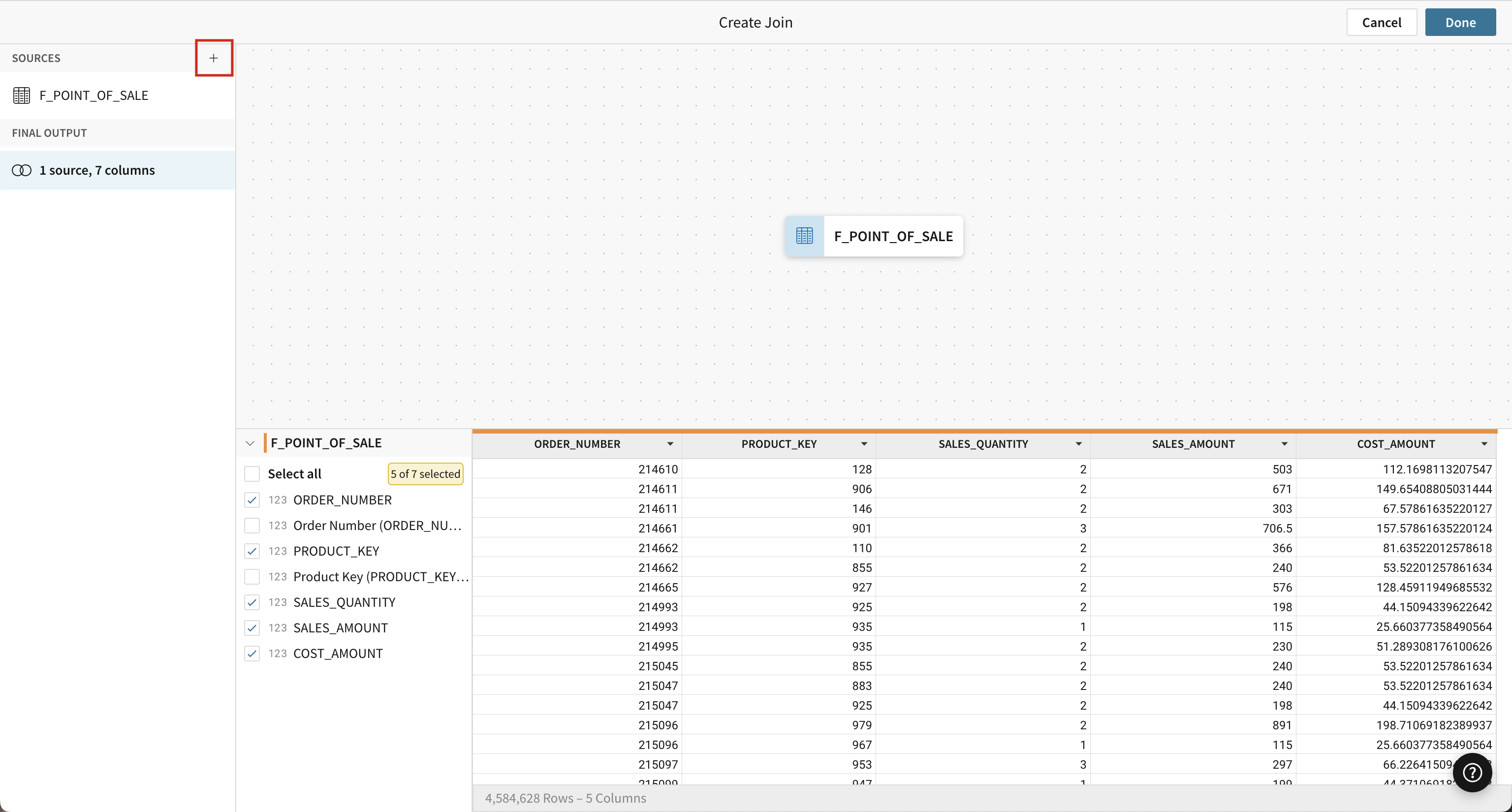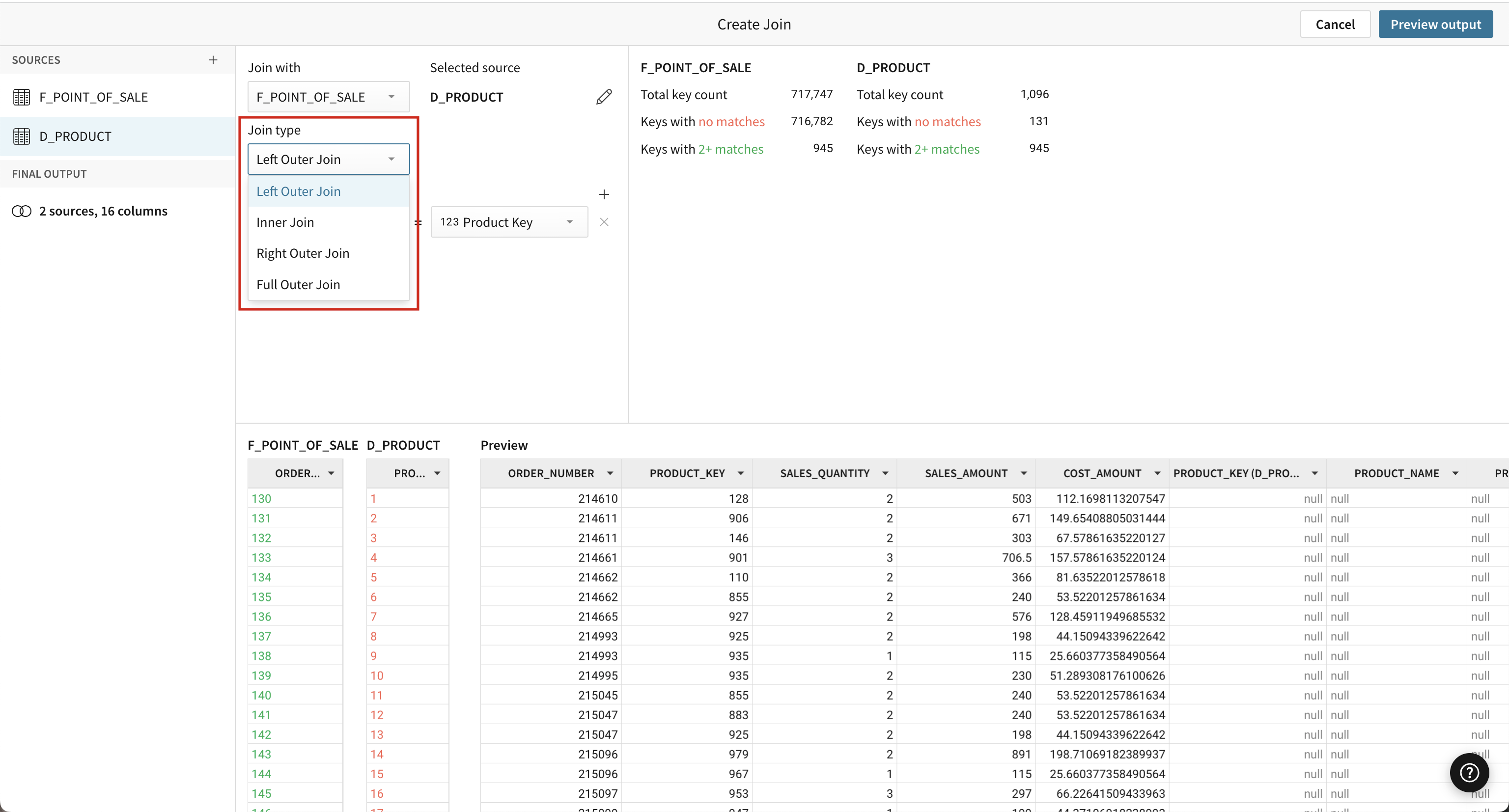Join data in workbooks
Joins combine data from multiple sources based on matching columns.
This article covers how to create joins in workbooks, for example, so that you can combine data from multiple sources in a single data element.
For details on joins and guidance choosing the join type you want to use to combine data, see Join types.
Join data sources
Before you start: This action is only available in edit mode. To begin editing, click Edit in the top right corner of the page.
-
Select
to open the workbook's ADD NEW ELEMENT panel.
-
Under DATA ELEMENTS, select the type of element you want to add: TABLE, VIZ, or PIVOT TABLE.
-
Select Join or Union to combine data sources.
-
In the Select source dialog that appears, search for a data source or current workbook element, or browse to a workbook element, table, or dataset.
-
Select a data source to preview and choose the columns to select, then click Select.
The Create Join page opens. -
Joins require two or more sources.
To add a second source, next to SOURCES, click +.

-
Repeat steps 4 & 5.
-
Select a Join type.

-
Select the Join keys to use. On the right side of the page, you see the match rates for your selected join keys.
 In some cases, you might want to define multiple pairs of join keys, such as with a full outer join.
In some cases, you might want to define multiple pairs of join keys, such as with a full outer join. -
[optional] To join an another source, repeat steps 6 – 9.
-
Select Preview output.
-
Review the preview of the joined data sources and make any changes to included columns.

-
Select Done.
Your new element appears in the workbook.
Updated 20 days ago
